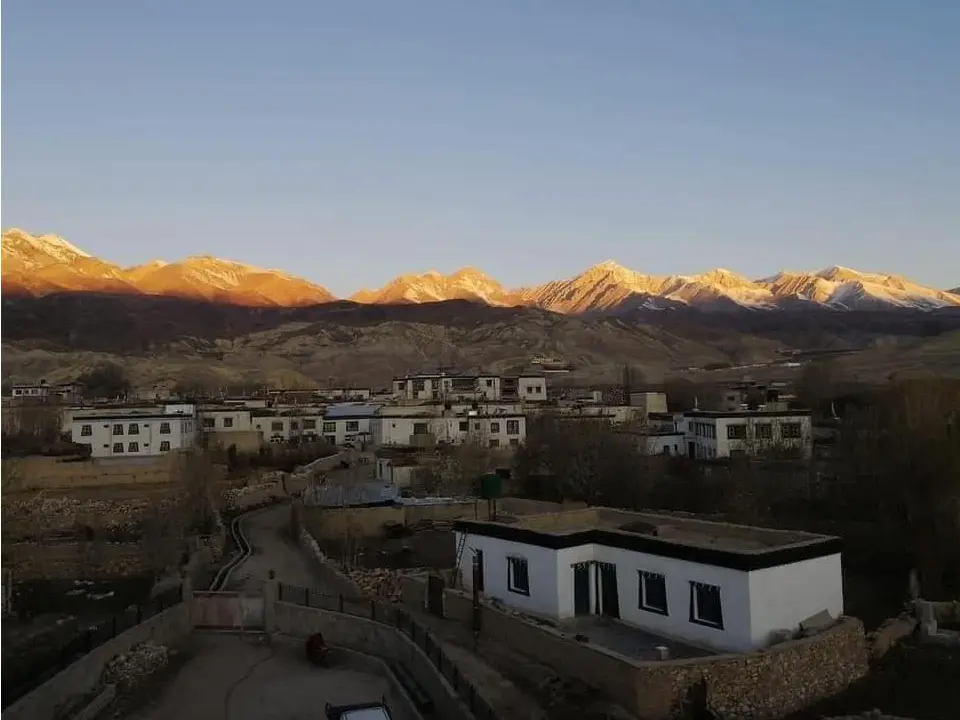Festival Highlights
- Sacred Masked Dances (Chhyam) performed by monks of Choede Monastery representing the victory of good over evil.
- Three-Day Celebration (May 14–16, 2026) in the walled city of Lo-Manthang.
- Cultural Gathering of locals in traditional attire, offering a rare glimpse of authentic Tibetan Buddhist traditions.
- Royal Palace Courtyard becomes the main stage, with monks, lamas, and villagers participating.
- Spiritual Significance : rituals aim to dispel negative forces and bring peace, prosperity, and harmony.
- Photography Paradise : dramatic landscapes of Mustang combined with vibrant cultural colors.
- Unique Permit Area : explore a region long restricted, preserving ancient culture and architecture.
Overview
The Tiji Festival, abbreviated from "Tenpa Chirim" (meaning "Prayer for World Peace"), stands as the premier annual event in Upper Mustang. It honors the mythic triumph of the deity Dorje Jono, who defeated his demonic father to shield the region from drought and ruin.Hosted in the ancient walled city of Lo Manthang, this three-day spectacle features captivating sacred dances, melodic chants, and rituals performed by monks in ornate costumes and masks. While steeped in profound Buddhist traditions, Tiji has grown into a global cultural draw, luring international travelers yet retaining its intimate, community-rooted spirituality.Reaching Mustang via trek or jeep proves an epic quest unto itself, winding through desolate high-desert expanses, timeless monasteries, enigmatic caves, and stunning Himalayan panoramas.
Upper Mustang Tiji Festival Dates 2026
The Tiji Festival 2026 will be celebrated in the walled city of Lo-Manthang, Upper Mustang, from 14th to 16th May 2026. This sacred three-day festival is one of the most vibrant cultural events in the Himalayas, showcasing ancient Buddhist traditions, masked dances, and spiritual rituals.
- 14 May 2026 : Tiji Festival in Lo-Manthang (Day 1)
- 15 May 2026 :Tiji Festival in Lo-Manthang (Day 2)
- 16 May 2026 : Tiji Festival in Lo-Manthang (Day 3, Closing Ceremony)
Outline Itinerary
- Day 01: Arrive in Kathmandu (sightseeing, permit preparation)
- Day 02: Drive or fly to Pokhara
- Day 03: Fly to Jomsom, trek/drive to Kagbeni (gateway to Upper Mustang)
- Day 04: Trek to Chele (3,050m)
- Day 05: Trek to Syangboche (3,800m)
- Day 06: Trek to Ghami (3,520m)
- Day 07: Trek to Tsarang (3,560m)
- Day 08: Trek to Lo-Manthang (3,840m) attend festival :Opening rituals, monk dances symbolizing expelling demons
- Day 09: Major masked dances and ceremonies
- Day 10: Final rituals, burning effigy, spiritual conclusion
- Day 11: Trek to Dhakmar (3,810m)
- Day 12: Trek to Ghiling (3,570m)
- Day 13: Trek to Chhuksang (3,050m)
- Day 14: Trek/drive to Jomsom then fly back to Pokhara
- Day 15:Drive or Fly back to Kathmandu
- Day 16:Departure
Best Time to Visit Upper Mustang
Nestled in the Himalayan rain shadow, Upper Mustang emerges as one of Nepal's rare trekking gems, boasting an extended and distinctive travel window. Unlike typical Himalayan routes that succumb to seasonal whims, this arid enclave stays largely untouched by monsoon deluges, enabling visits throughout the year. Yet, the optimal timing hinges on your personal pursuits and preferences:
Spring (March – May)
- Highlights: Azure skies, balmy daytime warmth, vibrant alpine blooms, and majestic snow-draped Himalayan vistas.
- Special Attraction: The iconic Tiji Festival in May, unfolding in the historic enclave of Lo Manthang, infuses spring with unparalleled cultural vitality.
- Why Visit: An exquisite harmony of favorable weather, breathtaking scenery, and profound cultural engagement.
Summer / Monsoon (June – August)
- Highlights: Shielded by its rain-shadow geography, Upper Mustang remains parched and accessible while much of Nepal grapples with torrential rains.
- Why Visit: A haven for seekers of serene paths and otherworldly, desert-esque terrains.
- Note: Travel logistics, including roads and flights from lower areas (such as Pokhara to Jomsom), might encounter sporadic interruptions due to monsoonal effects elsewhere.
Autumn (September – November)
- Highlights: Pristine, crystalline skies, temperate climes, and awe-inspiring panoramas of Mustang's stark cliffs juxtaposed against towering Himalayan summits.
- Why Visit: Hailed as the prime alternative to spring, it's exceptional for intrepid treks and captivating photography.
Winter (December – February)
- Highlights: Ethereal snow-blanketed vistas and a profoundly tranquil ambiance.
- Challenges: Brutal cold snaps, particularly in Lo Manthang (plunging below freezing after dusk), with numerous teahouses and high passes shuttered for the season.
- Why Visit: Reserved for hardy explorers undaunted by severe wintry rigors.

